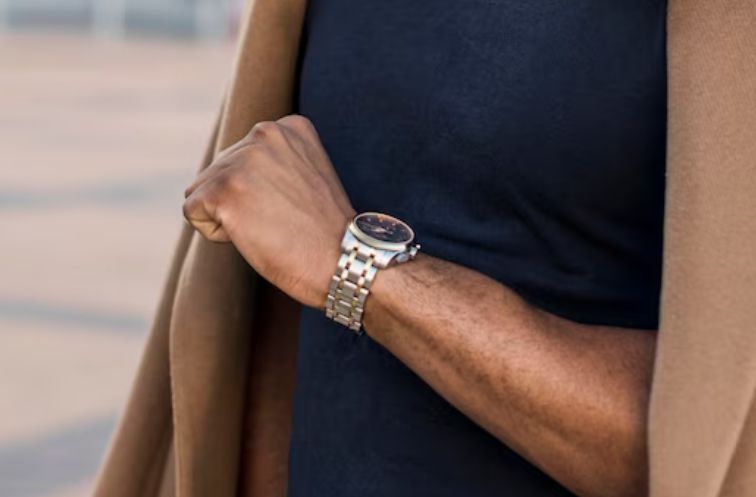Struggling to tell time on modern or classic watches? This guide shows men how to read a watch face, dials, bezels, Roman numerals, and more, without confusion.
A true gentleman’s relationship with time speaks volumes about his discipline, elegance, and values.
Learning how to read all types of watches, whether with Roman numerals, sub-dials, bezels, or no numbers at all, is a mark of sophistication every man should master.
In an age where digital convenience dominates, analog and mechanical watches remain timeless symbols of heritage and class.
From classic three-hand displays to intricate chronographs and tachymeters, each watch type tells time in its refined language.
This guide walks you through the art of reading a gentleman’s watch, helping you understand the details, dials, and designs that define style, precision, and purpose.
Recommended: Men’s Lifestyle and Culture – Everything to Know
Table of Contents
- Main Points
- The Basic Parts of a Traditional Watch
- How to Read Time on an Analog Watch
- Understanding Sub-Dials and Extra Features
- How a Gentleman Interacts with His Watch
- How to Read a Watch Clock
- Navigating a Chronograph Watch
- How to Read a Watch Without Numbers
- How to Read a Watch with Roman Numerals
- How to Read a Minimalist Watch
- How to Use the Tachymeter on Your Watch
- Reading Watch Bezels
- Fast Visual Shortcuts to Read Time Quickly on a Watch
- Watch Etiquette and Time Awareness
- Frequently Asked Questions
- Conclusion
Main Points
- Knowing watch parts like the dial, hour, minute, and second hands helps you confidently read and understand any watch face.
- Chronograph watches use sub-dials as stopwatches, measuring seconds, minutes, or hours, adding function and sporty elegance to your timepiece.
- Watches without numbers use dots or lines as markers; recognizing their placement lets you tell time clearly and accurately.
- Tachymeters on chronograph watches measure speed by timing how long it takes to travel a known distance using the scale.
The Basic Parts of a Traditional Watch
Before you can read a watch with confidence, you need to know what you’re looking at.
Each part of the watch face plays a role in how time is displayed and understood. Let’s break it down clearly and simply.
Watch Face: The Dial
This is the surface where time shows itself. You’re looking at the backdrop that holds the hands and markers. Most dials are round, though some are square or rectangular.
Some are plain, others are detailed with texture. Either way, the goal stays the same, to give you a clear view of the time.
You might prefer a dial with numbers or simple lines. Either works, as long as you can read it fast and without guesswork.
Recommended: Best practices for men’s watch care
Hour, Minute, and Second Hands
These are the moving pieces that show you the time. The hour hand is short and thick. The minute hand is longer and slimmer.
The second hand is the thinnest and moves the fastest. Some watches skip the second hand, but when it’s there, it tracks every second that passes.
Some glow in the dark. Some are shaped for style. What matters is knowing which hand tells what, so you’re not left guessing.
Hour Markers
These are the points that tell you where the hours land on the dial.
You might see Roman numerals, Arabic numbers, or simple lines. Roman numerals feel more formal, Arabic numbers are clear and direct, and lines give a clean, modern look.
Usually, the 12, 3, 6, and 9 positions stand out more, so your eyes can find the time quickly. It’s not just about looks. It’s about quick, accurate reading.
Crown and Case Basics
The crown is the knob on the side. You’ll use it to set the time. If it’s a mechanical watch, you’ll also wind it.
The feel of the crown can tell you a lot about the build quality, some are easy to grip, others feel rough or too small.
The case holds the dial and the gears inside. Most are made of steel, gold, or titanium.
The finish can be shiny or matte, and while it adds to the look, it also protects the inside. A solid case and a working crown are things you’ll always want to check.
Related Posts
- Men’s Fashion Accessories Guide
- A Complete Guide to Men’s Watches
- Best Men’s Watches According to Affordability, Luxury and More
- Guide to Men’s Dress Watch Guide
- Ultimate Guide to Pocket Watches
- Men’s Watches Under $100
- Guide to Luxury Men’s Watches
- Best Men’s Watches Under $1000
- How to Know a Fake Watch
How to Read Time on an Analog Watch
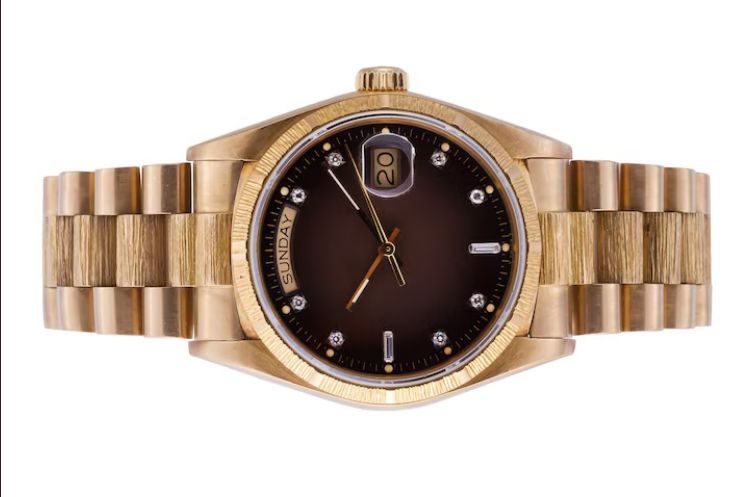
Understanding how to read an analog watch starts with knowing what each hand tells you. Let’s break it down step by step so you can tell time easily and accurately.
Reading the Hour Hand
The hour hand moves slowly and makes one full turn every 12 hours.
To read it, see where it points among the hour markers. If it’s pointing right at the 3, that means it’s 3 o’clock.
If it’s between 2 and 3, then it’s about 2:30. You need to watch carefully because the hour hand moves gradually, which helps you focus on the exact time.
Remember, this hand doesn’t show AM or PM, so you’ll use context to figure out if it’s morning or evening.
Reading the Minute Hand
The minute hand goes around the dial once every hour. Each hour marker equals 5 minutes.
For example, if the minute hand points at 6, that means 30 minutes past the hour.
There are usually smaller marks between the main numbers that stand for single minutes, letting you get precise.
You’ll find yourself glancing at the minute hand to get a quick, accurate time without hesitation.
Reading the Second Hand
If your watch has a second hand, it completes one full circle every 60 seconds.
Mechanical watches usually have a smooth sweep, while quartz watches tick with each second.
The second hand is handy when you need exact timing, like checking your pulse or timing an event.
Most of the time, you won’t watch it closely, but it’s there for precision when you need it.
Related: Signs Your Wristwatch Needs Servicing
Understanding Sub-Dials and Extra Features
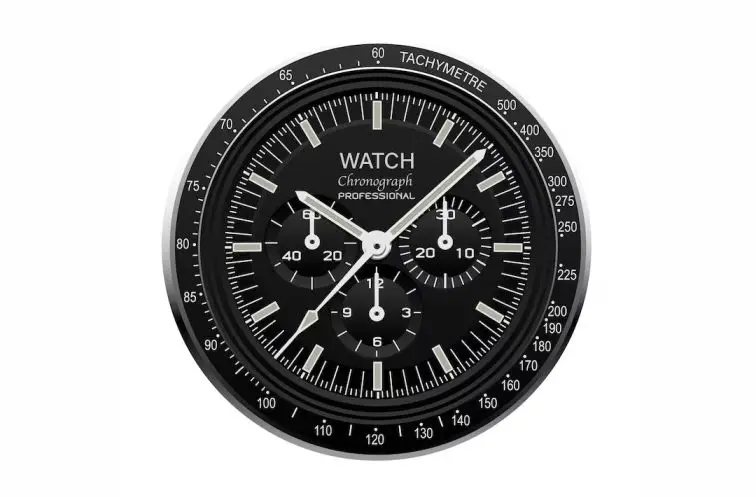
Extra functions on your watch do more than tell time, they add usefulness and style.
Let’s break down the common sub-dials and special features you’ll find on many watches, so you know how to read and appreciate them.
Chronograph Sub-Dials
Chronograph watches come with extra-small dials called sub-dials. These act like a stopwatch, measuring seconds, minutes, or even hours.
Usually, there are two or three sub-dials, each tracking a specific time segment. For example, a 30-minute sub-dial counts up to half an hour before resetting.
To read them, look at the position of the sub-dial hand just like you do on the main dial.
These sub-dials add both function and style, giving your watch a sporty but refined look you can trust.
Date Window
Many watches have a small window that shows the date, often near 3 or 6 o’clock.
Sometimes there’s a tiny magnifying glass over it to make the numbers easier to see.
Reading the date is simple: just check the number displayed in the window.
Some watches also show the day of the week along with the date.
Adjusting this feature usually requires using the crown carefully to avoid messing up the watch’s mechanics.
This practical tool helps you keep track of your schedule effortlessly.
Power Reserve Indicator, Moonphase, GMT Hand
Some watches offer extra features like a power reserve indicator that tells you how much energy is left in the watch’s spring.
A moonphase display shows the current phase of the moon, adding a classic touch.
A GMT hand tracks a second time zone, great if you travel often, and stands out by color or shape.
While you don’t need these every day, they bring personality and function to your watch.
You’ll appreciate the detail and craftsmanship behind these extras when you want more than just the time.
Related: How to Wear a Pocket Watch
How a Gentleman Interacts with His Watch

Your watch is more than a tool to tell time. It’s part of your style and how you show respect for time and those around you.
Here’s how to wear and use your watch with grace and confidence.
Proper Wrist Placement and Fit
Your watch should feel comfortable on your wrist, not tight, not loose.
The case sits just past the bone on the back of your wrist so you can easily check the time with a small turn of your arm.
The strap or bracelet should hold the watch in place but leave room for one finger underneath.
Make sure your watch fits your wrist size well; avoid anything too big or too small. Remember, your wrist size can change with temperature, so adjust the strap as needed.
When and How to Check the Time Respectfully
Looking at your watch should be smooth and subtle. In social settings, turn your wrist gently without drawing too much attention.
Wait for a break in conversation before you check so you don’t seem distracted.
At work, keep your wrist low for a glance without lifting your arm or breaking eye contact too long.
These small habits show respect for others and help you stay present while managing your time well.
Avoiding Distractions and Showing Class
Your watch is there to help, not to entertain. Avoid fidgeting or playing with it when talking to others.
Don’t use watch features like chronographs in formal situations unless you need to.
Let your watch blend with your outfit, it should support your style, not steal the show.
Treat your watch with care and confidence. This quiet restraint speaks volumes about your character and sets you apart as a true gentleman.
How to Read a Watch Clock
Reading a watch clock starts with recognizing the hour and minute hands.
The hour hand is shorter and thicker, pointing to the hour numbers or markers from 1 to 12 on the dial.
The minute hand is longer and thinner and moves around the watch face to show minutes.
Between the hour markers, you’ll see smaller marks representing each minute. To read the time, first see which hour the hour hand is closest to.
Then, check where the minute hand points to find the exact minute.
If your watch has a second hand, it moves continuously around the dial, but you don’t need it to tell the time.
Digital watches show the time as numbers, usually with hours and minutes, so you just read those directly.
Practicing regularly helps you quickly and accurately tell the time without having to count each tick or number in your head.
Navigating a Chronograph Watch
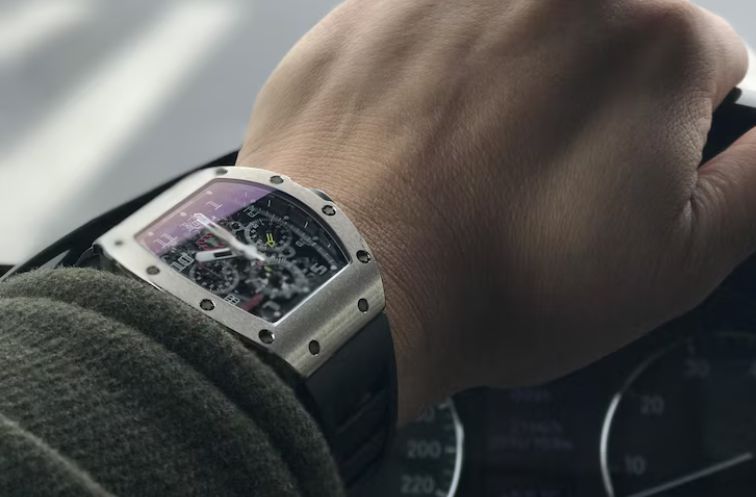
A chronograph watch tells time and works like a stopwatch. It has small sub-dials on the face that track seconds, minutes, and sometimes hours.
The main hands show the current time, while the sub-dials measure elapsed time during timing.
To use the chronograph, press the top button to start or stop the stopwatch. The bottom button resets it to zero.
When the stopwatch runs, the large second hand usually moves to count seconds, while one sub-dial tracks minutes, and another may track hours.
The small seconds sub-dial shows the normal seconds for regular timekeeping. This means you can check the current time even while using the stopwatch.
Understanding these functions helps you use your chronograph watch for activities like workouts, cooking, or any task that needs precise timing.
Start by identifying each sub-dial, then practice using the pushers for smooth operation.
How to Read a Watch Without Numbers
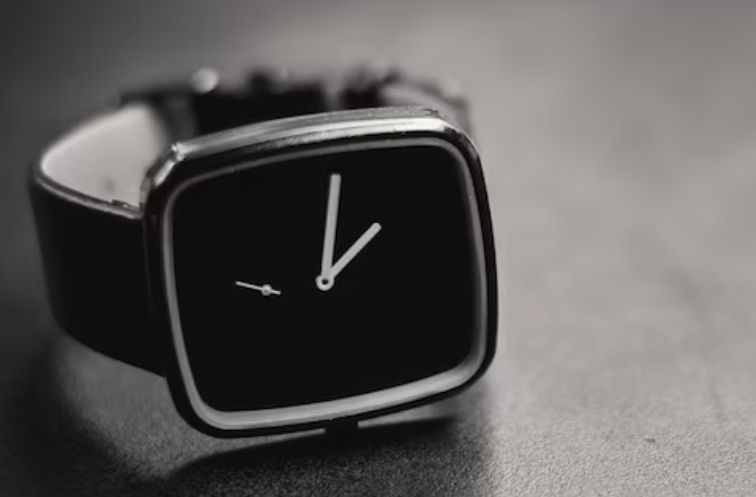
If your watch doesn’t have numbers, reading the time can seem confusing at first. Most watches without numbers use dots or lines to mark the hours.
These markers follow the clock layout: 12 at the top, 3 on the right, 6 at the bottom, and 9 on the left.
To read the time, start by identifying these main markers. The hour hand points to the current hour or just past it.
The minute hand moves faster, completing one full circle every 60 minutes. Watch where the minute hand falls between markers to estimate the minutes.
For example, if it’s between the 10 and 11 markers, it’s about 50 to 55 minutes past the hour.
Practice by checking your watch regularly. Over time, reading a watch without numbers becomes easy.
You’ll also enjoy the clean look and feel more confident telling time at a glance.
How to Read a Watch with Roman Numerals

Roman numerals give watches a classic look, but reading them can be tricky if you’re not familiar with the symbols.
The numbers you’ll see are: I (1), II (2), III (3), IV or sometimes IIII (4), V (5), VI (6), VII (7), VIII (8), IX (9), X (10), XI (11), and XII (12).
A common source of confusion is the number four. Some watches show IV, others use IIII, both mean the same thing.
Also, IX (9) and XI (11) can look similar at a glance, so take a moment to confirm which number you’re seeing.
To read Roman numeral watches easily, learn the positions of these numerals on the dial.
Twelve is always at the top, three on the right, six at the bottom, and nine on the left.
With practice, you’ll quickly recognize each numeral and tell time with confidence.
How to Read a Minimalist Watch
Minimalist watches have simple faces, often without numbers or many markers. This can make telling time feel tricky at first, but it gets easier once you understand the layout.
Most minimalist watches show just the hour and minute hands clearly. Some have small markers at 12, 3, 6, and 9, while others use dots or lines for each hour.
The shorter hand shows the hour, and the longer hand shows minutes.
To tell time, look at where the hands point relative to these markers. For example, if the hour hand is just past 10 and the minute hand points to 6, it’s about 10:30.
Try imagining a regular clock face over the minimalist design. With practice, you’ll quickly read the time even on the simplest watch faces.
How to Use the Tachymeter on Your Watch
A tachymeter helps you measure speed or distance using your watch’s chronograph.
To start, press the chronograph’s start button as you pass a known distance marker, like one mile or a kilometer.
When you reach the end of that distance, stop the chronograph.
Look at the second hand’s position on the tachymeter scale around the watch face. For example, if it took 30 seconds to cover one mile, the scale will show 120, meaning you traveled at 120 miles per hour.
You can use the tachymeter for any distance by dividing the time by the distance and matching it on the scale.
Keep in mind, the tachymeter works best for short distances and fast speeds. Longer times may give less accurate readings.
With a bit of practice, you’ll find the tachymeter a handy tool for timing and speed calculations on your chronograph watch.
Reading Watch Bezels
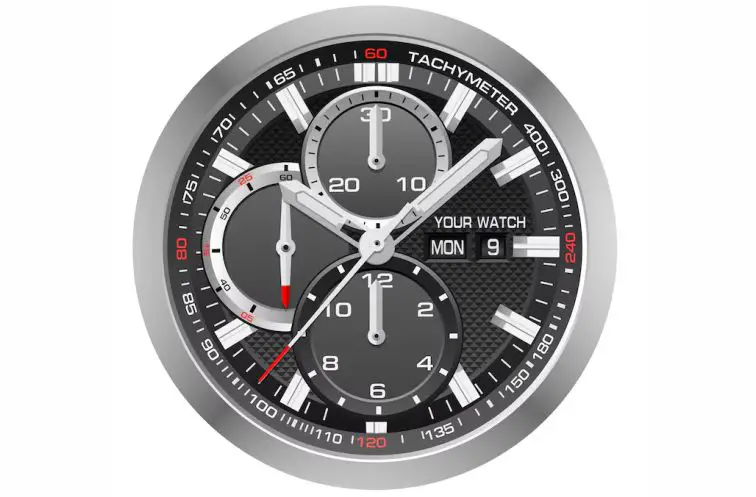
Understanding watch bezels helps you get more from your timepiece. Two common types are rotating bezels and GMT bezels, each with a clear function.
A rotating bezel lets you measure elapsed time. To use it, align the bezel’s zero mark with the minute hand when you start an activity.
As time passes, check where the minute hand points on the bezel to see how many minutes have passed.
This is especially useful for divers and pilots who need quick time tracking.
A GMT bezel helps you track two time zones. Your watch shows local time with the regular hour hand, while the GMT hand points to a 24-hour scale on the bezel.
Rotating the bezel adjusts this scale, so you can easily read the second time zone, ideal for travelers or those working internationally.
Knowing how to read these bezels makes your watch a powerful tool for everyday life and special activities.
Fast Visual Shortcuts to Read Time Quickly on a Watch
Reading time on a watch face can be tricky, especially when you’re in a rush.
You need a way to see the time fast without getting confused by the different watch designs.
Here are some simple tricks to help you read any watch quickly and accurately.
Focus on the Hands’ Positions
Start by looking at where the hour and minute hands point. Think about their positions on the numbers on the watch face. For example:
- If the hour hand is just past 3
- And the minute hand points at 6
You instantly know it’s about 3:30. This method lets you skip counting every minute and speeds up your reading.
With some practice, you’ll get used to this and read time in seconds, no matter the watch style.
Use Colors and Markers as Guides
Many watches have colored details or bold markers on key numbers or minute marks. These are not just for style, they help you spot the time faster. For instance:
- A red tip on the minute hand helps you see exactly where the minutes are.
- Bold markers at quarter hours (15, 30, 45 minutes) make it easier to estimate the time quickly.
Train yourself to spot these highlights to avoid focusing on every small detail.
Practice with Timed Sessions
The best way to get faster is to practice. Try this:
- Look at a watch for just a few seconds.
- Then close your eyes and say the time out loud.
Repeat this often. Over time, you’ll build muscle memory, allowing you to glance at a watch and instantly know the time.
Try this with different watch designs, analog, minimalist, or ones with extra dials, so you’re ready for any style.
Build a Simple Routine
Make this a habit. Spend a few minutes each day practicing these shortcuts.
Soon, reading time on any watch will feel natural, even when you’re busy or distracted.
This skill helps you manage your schedule better and stay on track during your day.
Watch Etiquette and Time Awareness
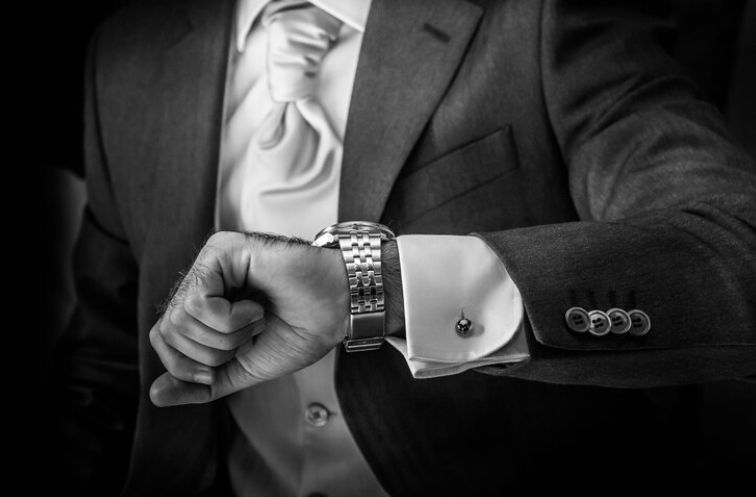
Knowing how and when to check your watch can make a big difference in how others see you.
It’s about showing respect, staying punctual, and managing your time smoothly without distractions.
Master these simple habits to boost your presence everywhere.
Reading Time Smoothly in Meetings or Dates
When you’re in a meeting or on a date, checking the time should feel natural and subtle.
Keep your watch visible but glance at it only when needed, like between topics or when the conversation pauses.
On a date, limit how often you check the time so your focus stays on your companion. Try a small wrist tilt or adjust your posture when you look at your watch.
This way, you stay aware without interrupting the flow, showing respect and attention.
Why Being On Time Matters
Punctuality speaks volumes about your character. Using your watch to arrive on time shows you value other people’s schedules.
Whether it’s work, a social event, or a personal appointment, planning helps you avoid delays.
Being punctual tells others you respect their time and that you’re reliable. It builds trust and shows you take commitments seriously.
Use Your Watch as a Quiet Timekeeper
Your watch is there to help you manage time, not to impress anyone. Avoid showing it off or checking it too often.
Unlike a phone, a watch lets you check the time discreetly without distractions or giving the wrong impression.
When you rely on your watch, you keep your attention where it belongs: on conversations, work, or relaxing moments.
It’s a simple way to stay disciplined and in control of your day.
Frequently Asked Questions
How do I read the hour hand on an analog watch?
The short, thick hour hand points to the hour marker, gradually moving between numbers to show precise time, but doesn’t indicate AM or PM.
What is the function of sub-dials on a chronograph watch?
Sub-dials act as stopwatches, measuring elapsed seconds, minutes, or hours, allowing precise timing beyond just telling the current time.
How do I tell time on a watch without numbers?
Use dots or lines as hour markers, noting their standard positions (12, 3, 6, 9), then read the hour and minute hands accordingly.
How can I use a tachymeter bezel?
Start the chronograph at a distance marker and stop it after traveling the distance; the tachymeter scale shows your speed based on seconds elapsed.
Conclusion
Mastering the art of reading a watch is a mark of refinement and practicality.
Whether it’s a classic analog with Roman numerals, a minimalist design without numbers, or a complex chronograph with multiple sub-dials and a tachymeter, understanding your timepiece’s features empowers you to tell time accurately and confidently.
Your watch is more than just a tool, it’s a symbol of discipline, elegance, and respect for time.
By learning how each hand, dial, and bezel works, you not only enhance your style but also appreciate the craftsmanship behind your watch.
Practice regularly, and soon reading any watch will become second nature to you, the true gentleman.
References
- Watch Dial: Everything to Know about the Face of Your Watch
- How to tell the time using an analog face, with no numbers or markers.
Pyo Merez is a men’s lifestyle enthusiast and writer about the gentleman’s place and impact on society. Raised by a distinguished gentleman dad, he offers unique insights into how the mind of a gentleman works and how societal norms shape gentlemen’s identity and vice versa.
Through his insightful articles, Pyo taps into the depths of gentleman culture to provide perspectives on etiquette and manners in modern society.
